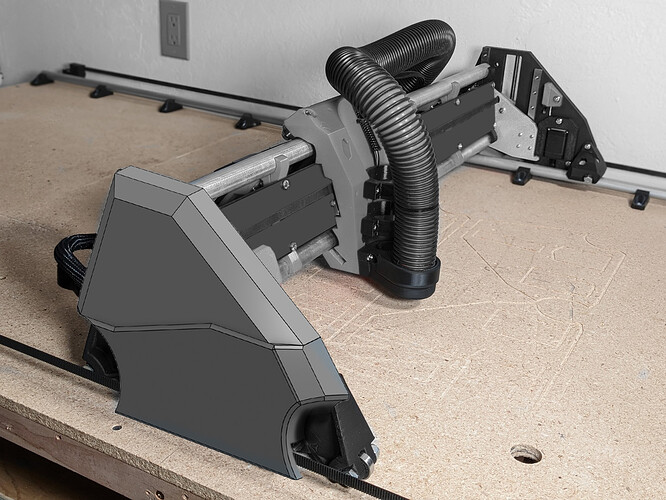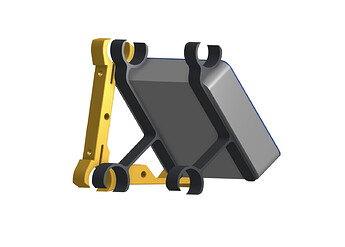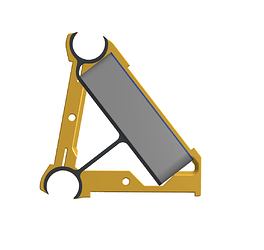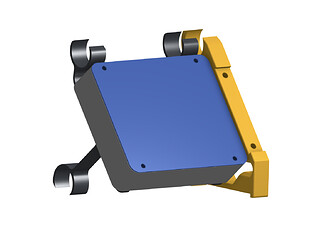Thanks for the feed back - I am super-encouraged!
I thought I’d wait till I’ve assembled it to see about the inside - I’m just not sure about the clearances, but it’s on my radar. (even if it means covering up all those shiny bits <sigh!>)
I’ve looked at a LOT of different shapes and concepts and to my eye at least a break is necessary.
The line here has a 3mm step in the two planes (sorry about the wonky join - that will go!), and that will allow printing in two colours or I’m thinking about painting the lower half to match the struts.
Design wise - there is probably a slight tolerance issue at the top of the z screw but until I measure it I won’t fix that.
Both the parts are intended to print flat on the build plate - they are currently designed as solids and will have the volumes of the steppers and other bits removed from them, then print with low infill.
My thought with that is to give as much rigidity to the structure as possible to minimise vibration and warping in use, without adding too much weight. It could be done with ribs of course and in the end I might look at that.
I like the “snap” idea! The hubcaps on my VW Transporter do exactly that, with split tubes that fit over the nuts. Might need to use two nuts (or even tube nuts) to get enough reliability - will look into that as an option.
I have given some thought to using magnets too, but that seems to be over complicating things.
The rail bolts are well positioned albeit more in the centre of the plate - my first thought was to use extended nuts on a few and simply screw into those from the face. That evolved into screwing directly into captive nuts using the rail mounting bolts.
But I really like the snap-on idea!
I’ve looked at quite a lot of folded options too - even considered making a die and stamping one, with 3d printed fixings epoxied on - thought it might make a super Art-deco kind of thing!
The version that came closest was printed surround with flat panels inserted, but it all seemed like a lot of fiddling just to prove a point.







